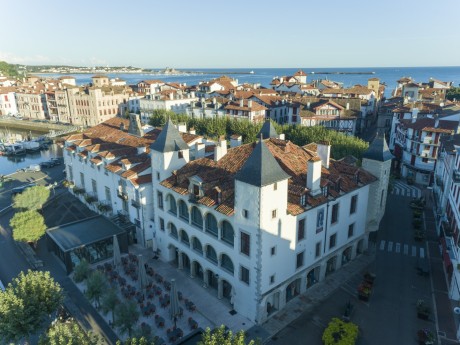Designated as a historical monument in 2005.
The Lohobiague House (Lohobiague-enea in Basque), built between 1643 and 1649, stood out from the outset as its architecture departed from the traditional style of the Labourd area. It later had extra sparkle through its association with the famous royal wedding of Louis XIV with the Spanish Infanta. Built for a rich ship-owner, the architecture of the house has two distinct styles. Facing south, towards the port, the Lohobiague House presents an imposing and functional façade, including towers and two floors of galleries which, in the past, opened onto terraces. Facing north, towards the town square, the house is more elegant with its classical style façade enhanced by decorations and framed by two corner turrets built on squinches. This northern façade, inspired by the architectural style found under Louis XIII, looks like the façade of mansions that flourished in cities at that time. The Lohobiague House has remained in the hands of the same family since it was built. Visitors have access to the finest floor of this historic house, which includes an impressive and restored French style ceiling decorated with biblical scenes scrolls.

